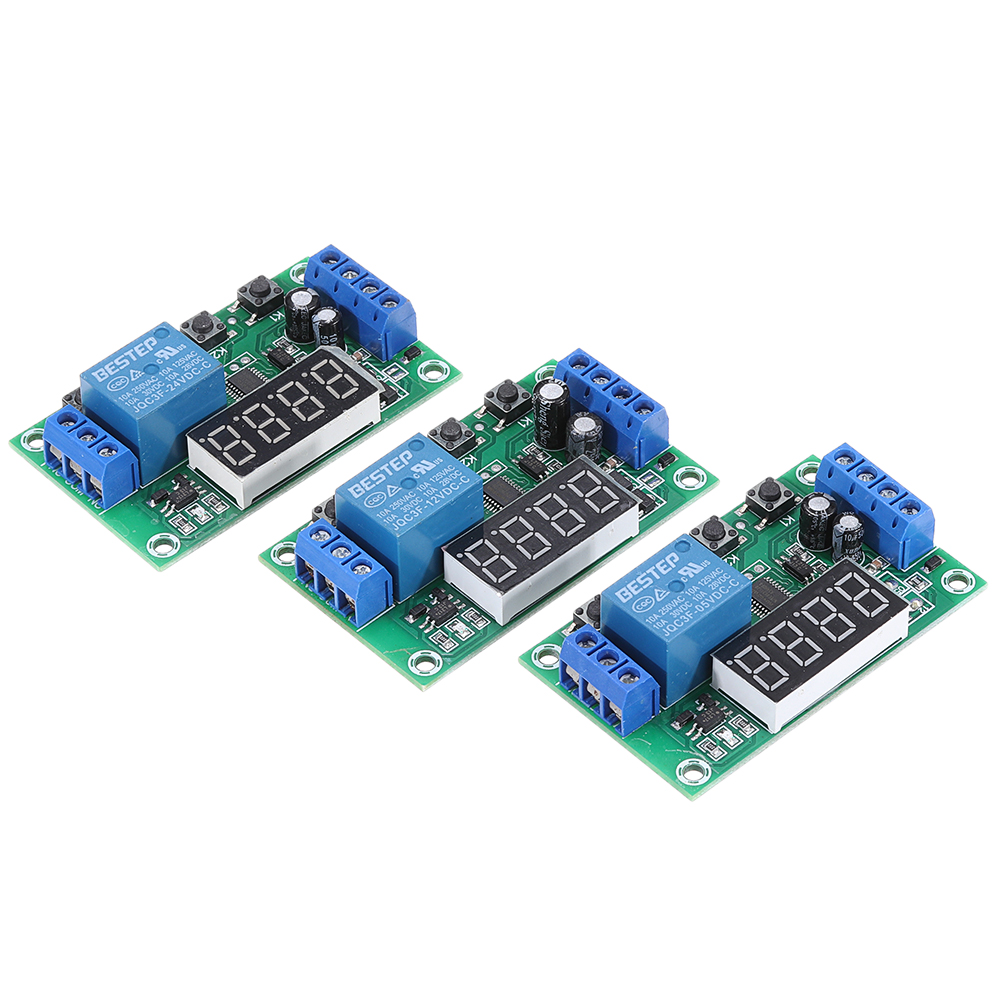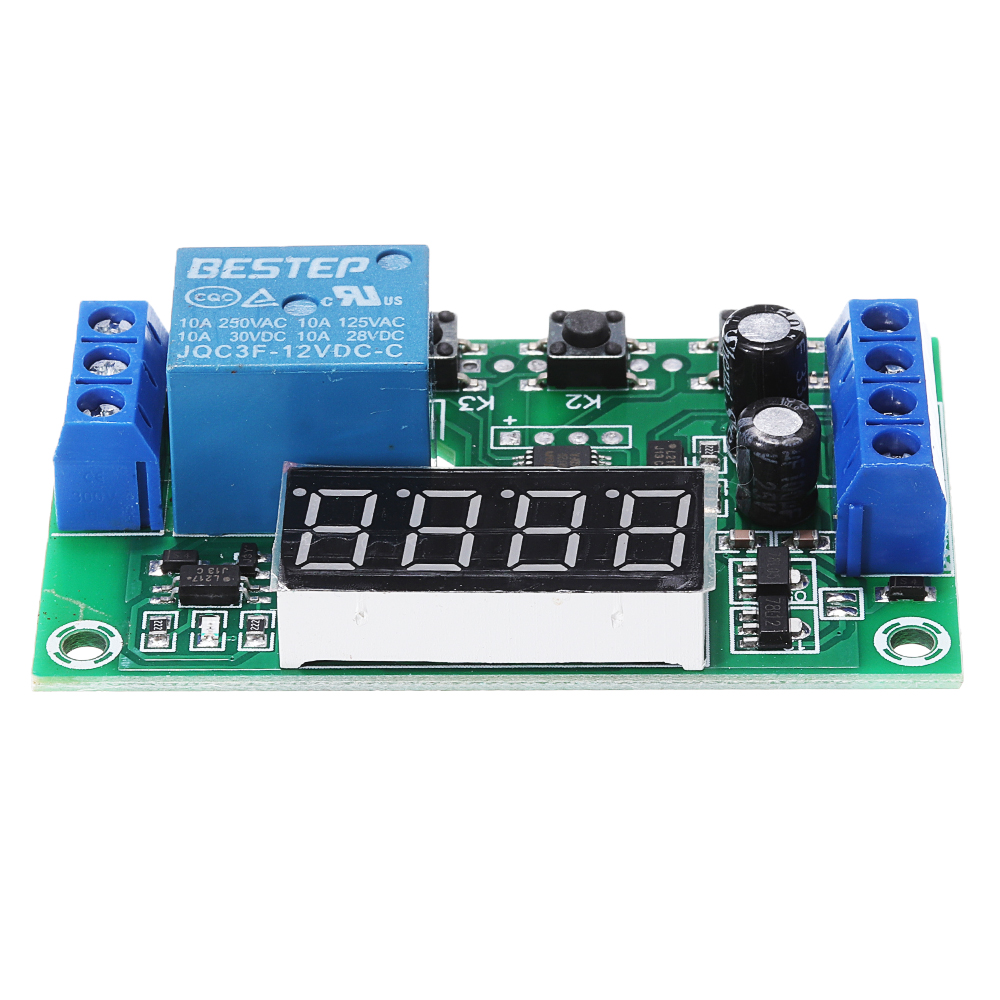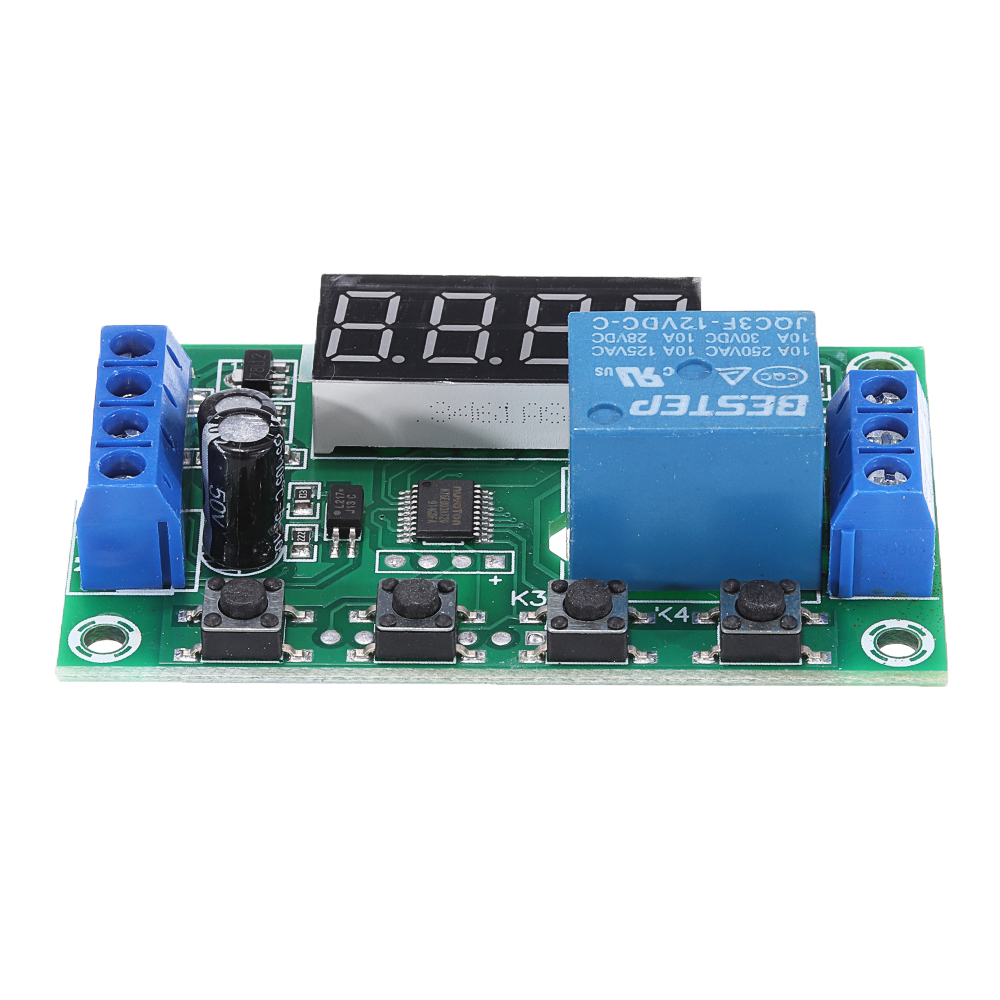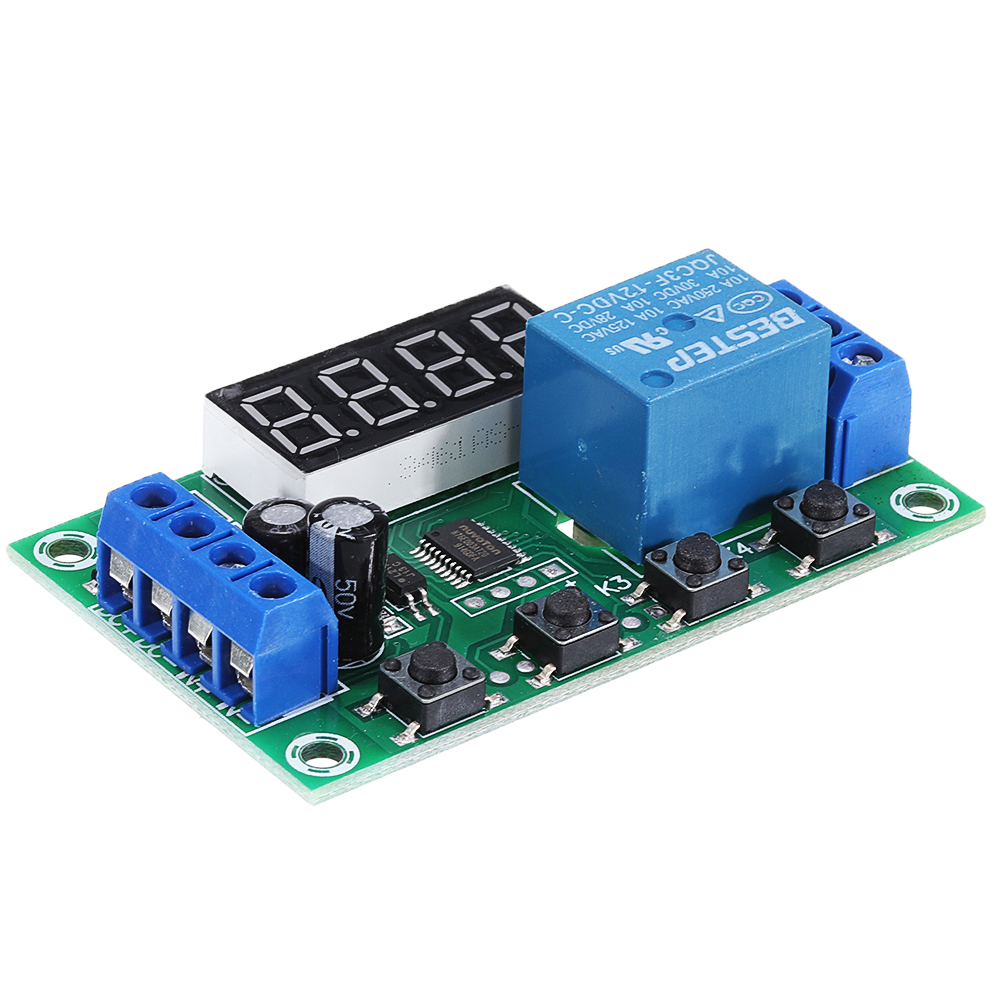
YYC-2S 5V 1 Channel Relay Module Cycle Trigger Delay Power-off Delay Timing Circuit Timer Switch with Display
Tax included.
Specifications:
1.24 kinds of commonly used functions to meet more application requirements; can control solenoid valves, pumps, motors, light strips, etc.
2: Output power: can control DC or AC load within 5A
3: Time range: 0.01 seconds to 999 minutes adjustable at any time
4: Description of the wiring port:
1, DC: input DC power supply positive
2, DC-: input DC power supply negative
3, IN: signal input positive
4, IN-: signal input terminal
5, NO: Relay normally open interface, the relay is suspended before the suction, after the suction and short circuit with COM
6, COM: relay common interface
7. NC: The relay normally closes the interface, and the relay is shorted to COM before the suction is closed.
Button trigger: (positive trigger: DC- and in- short circuit, DC and IN button
Or: (negative trigger: DC and in short circuit, DC- and IN- button)
Button Setting Instructions:
- Power on display "————" means to enter standby mode;
- Press K1 for the first time (it takes more than 1 second to be effective to prevent false triggering) Display: P -11: K2 adjusts the main mode, K3K4 adjustment function
- Press K1 for the second time, the screen displays: A001: K2 and K3 adjust the first time A, K4 adjusts the decimal point (time unit)
- Press K1 for the third time, the screen displays: B001: K2 and K3 adjust the second time B, K4 adjusts the decimal point (time unit)
- Pressing K1 for the fourth time, “————” means to enter standby mode
- Press K4 in standby mode to permanently turn off/on the display and switch the low power mode
Decimal Time Unit Description:
- X.XX decimal point in hundred, timing range: 0.01 seconds to 9.99 seconds
- XX.X decimal point in ten, timing range: 0.1 seconds to 99.9 seconds
- XXX has no decimal point, timing range: 1 second to 999 seconds
- XXX. The decimal point is in one place, the time range is from 1 minute to 999 minutes.
Function List:
P-11: Jog (give the signal relay, the signal disappears and the relay stops)
P-12: Self-locking (send a signal relay to pull in, then give a signal relay to stop)
P-13: Give the signal, the relay will stop automatically for A seconds; the trigger will be invalid during the delay.
P-14: Give the signal, the relay will stop automatically for A seconds; trigger the retime during the delay.
P-15: Give the signal, the relay will stop automatically for A seconds; trigger the superimposed timing during the delay.
P-16: Give signal, the relay will stop automatically for A seconds; trigger reset during delay
P-17: Give the signal, the relay is closed, the input signal is disconnected, the power is turned off after A seconds, and the signal is kept output again during the delay.
P-18: After power-on, the relay will immediately pull in, after a delay of A seconds, the power will be turned off;
P-21: Give the signal, after a delay of A seconds, the relay pulls in
P-22: Give signal, after more than A seconds, the relay pulls in, the signal disappears, the relay stops.
P-23: After the signal disappears for more than A seconds, the relay is closed, there is a signal, and the relay stops.
P-24: There is a signal. After more than A seconds, the relay is closed. After the signal disappears for more than A seconds, the relay stops.
P-25: There is a signal after more than A seconds, the relay is closed, and after a signal exceeds A seconds, the relay stops.
P-26: There is a signal. The relay stops after A seconds of suction. The signal disappears and the relay stops again for A seconds.
P-27: The pulse signal is detected, the relay stops; if there is no pulse signal, the relay delays for A seconds; (the signal is continuous or the signal disappears as no pulse signal)
P-28: After power-on, after a delay of A seconds, the relay pulls in until the power is turned off.
P-31: After power-on, the relay is closed for A seconds, disconnected for B seconds, infinite loop;
P-32: Signal, start P-31 infinite loop; signal disappears, terminate loop
P-33: Give a signal, start P-31 infinite loop; give another signal to terminate the loop
P-34: After power-on, after a delay of A seconds, the relay pulls in and closes after B seconds.
P-35: There is a signal. After a delay of A seconds, the relay pulls in and closes after B seconds.
P-36: There is a signal. After more than A seconds, the relay pulls in, the B is stopped after B seconds, the signal disappears, and the timing is cleared.
P-37: There is a signal, the relay will stop automatically for A seconds, and then stop for 24 seconds. The signal trigger is invalid during A B time.
P-38: There is a signal, the relay will stop automatically for A seconds, stop and re-clock for B seconds, and then automatically close for A seconds.
P-41: There is no signal; the signal disappears; the relay works after the delay of A time.
P-42: The signal disappears, after a delay of A time, the relay works; the end of work B time
P-43: The signal disappears. After the A time, the relay works; the working B time ends.
P-44: After power-on, the relay works for A time and stops B time; the cycle stops automatically for C times.
P-45: The power is not activated, after the signal is given; the relay works for A time, the B time is stopped; the cycle C stops automatically; the signal is given again, once again
P-46: After the signal is sent for more than A times, the relay is closed; the suction is kept; the power is stopped.
P-47: After the signal is sent for more than A times, the relay is closed for B seconds.
P-48: In C seconds, after the signal is continuously sent for more than A times, the relay is closed for B seconds.
Package Included:
1 x YYC-2S 5V 1 Channel Relay Module Cycle Trigger Delay Power-off Delay Timing Relay
1 x YYC-2S 5V 1 Channel Relay Module Cycle Trigger Delay Power-off Delay Timing Relay





